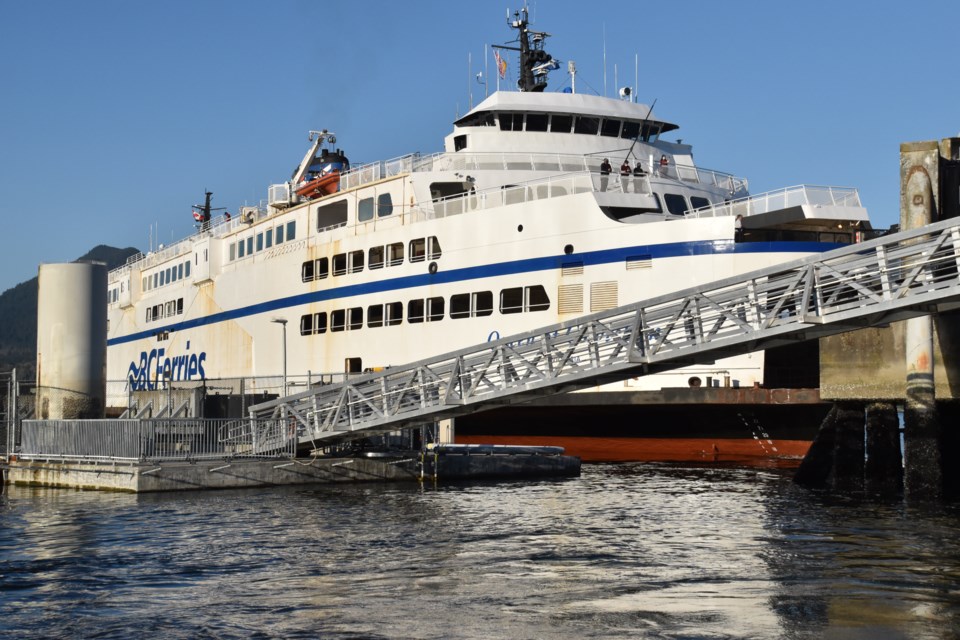BC Ferries has launched a new public engagement model. It’s slick, modern, and heavy on buzzwords: “inclusive,” “accessible,” and “regionally grounded.” But here’s what it’s not: community-led.
Last month, BC Ferries shut down the Ferry Advisory Committees (FACs), the only formal structure that gave coastal residents a voice in decisions that shape their lives. For over 30 years, FACs connected ferry-dependent communities with decision-makers on the issues that matter most: service changes, schedules, safety, capacity and costs.
Now, that long-term, rooted representation is gone. In its place? A mix of online tools, pop-up events and temporary “project feedback groups.”
It’s good to see BC Ferries trying to modernize its approach. But short-term panels and digital surveys aren’t the same as the long-term planning advantage of a permanent seat at the table, especially in small, rural communities where connectivity is limited and lived experience carries weight.
Meanwhile, new ferries are once again being built overseas. BC Ferries says no Canadian shipyard submitted a bid, but that’s because the process was stacked against them. Seaspan, B.C.’s largest shipbuilder, said the procurement offered no incentives for domestic content and failed to address key barriers like near zero tariffs for nearly a billion dollars’ worth of vessels and tight timelines.
Canadian shipyards follow higher labour, environmental and safety standards. Those standards are a strength, not a weakness. But without fair timelines, tariff protections or provincial support, they can’t compete.
When the BC Ferries Commissioner approved funding for these vessels, public consultation showed overwhelming support for building them here at home. Ignoring that feedback is a missed opportunity, not just for skilled jobs and apprenticeships, but for economic resilience.
Ottawa also has a role to play. Marine Atlantic, a federal Crown corporation, receives hundreds of millions of dollars in federal operating and capital funding, while BC Ferries receives a fraction of the support and must fund new vessels through fares and loans. Ferries are essential infrastructure, just like highways and railways. If the federal government can invest in marine services in the Maritimes, they can do the same here.
And then there are the service cuts and breakdowns.
The Horseshoe Bay route to Nanaimo will change to a reservation-only model in the fall, with almost no warning. After repeated vessel break-downs, coastal mayors and chambers of commerce are publicly calling out BC Ferries over reliability and planning failures. They’re not alone.
We’ve heard from communities up and down the coast who feel shut out, ignored and increasingly disrespected. Ferry service is not a luxury, it’s critical infrastructure, essential lifelines for health care, work, school and commerce.
When ferries fail, communities suffer.
We’re calling on the province to step in.
Reinstate the Ferry Advisory Committees. Create a real strategy to build ferries in B.C., for B.C. And make sure the people who rely on this system every day have a permanent voice in how it runs.
This is a public service. Let’s treat it that way.
Eric McNeely, President, BC Ferry & Marine Workers’ Union
Former Ferry Advisory Committee Chairs:
Kim Barton-Bridges, qathet (Northern Sunshine Coast)
Ian Cameron, Brentwood Bay/Mill Bay
Steven Earle, Gabriola Island
David Maude, Southern Gulf Islands
Diana Mumford, Southern Sunshine Coast
Karen Ross, Denman/Hornby Islands
Keith Rush, Chemanais/Thetis Island/Penelakut Islan



